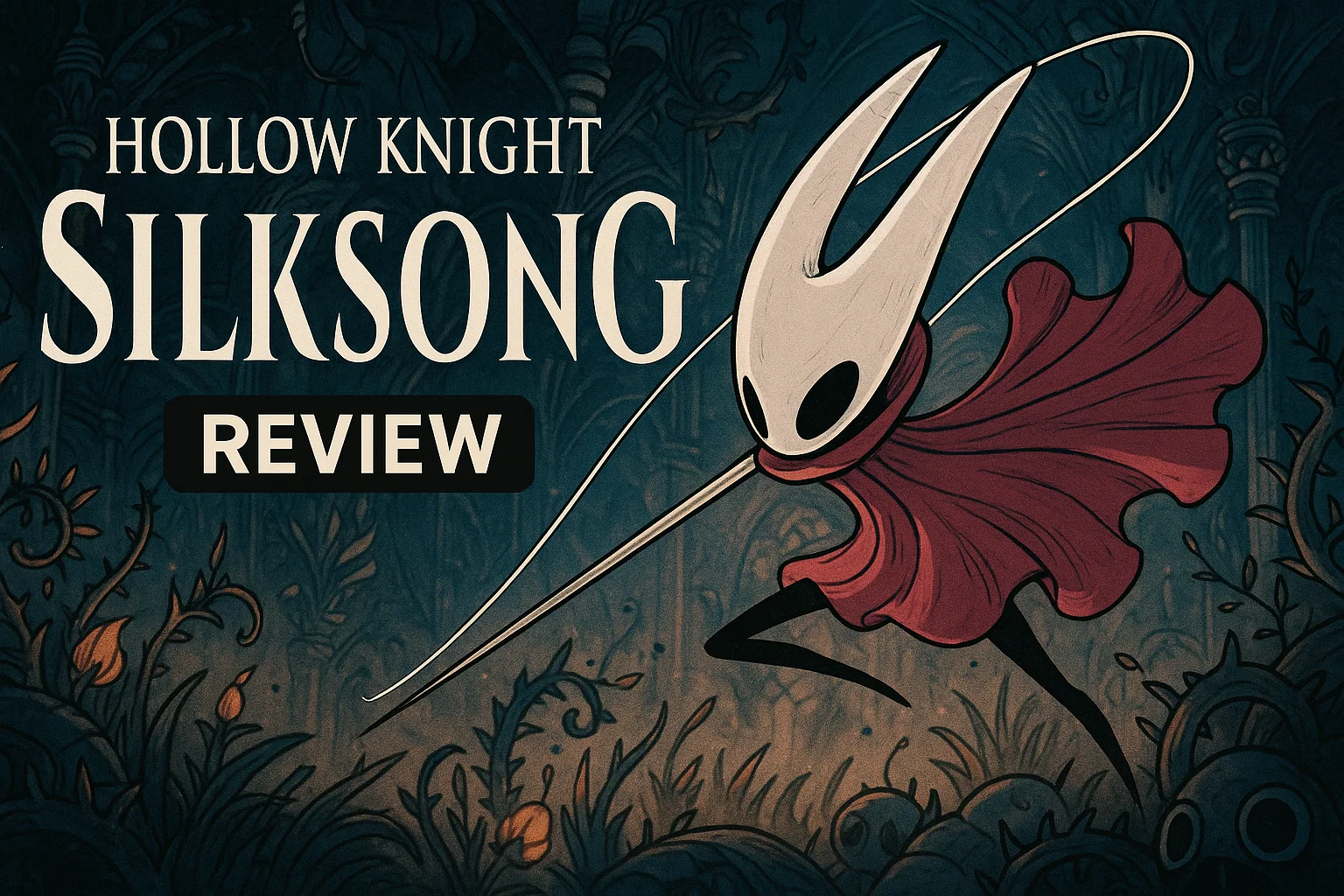If you’ve been saving a slot on your backlog for Hollow Knight: Silksong, the first wave of reviews may nudge it straight to the top. The broad mood is enthusiastic sometimes rapturous with a handful of caveats that could matter depending on how you like your Metroidvanias. Put simply: it’s excellent, it’s demanding, and it doesn’t mind reminding you who’s in charge.
The quick read (consensus)
Most outlets land on some version of: a superb, exacting follow-up that refines rather than reinvents. Fans of the original seem delighted several reviewers call it the “sharper,” “cleaner,” or “more acrobatic” version of what they already loved. Newcomers are a little more split. A few suggest the opening hours can feel brutal, particularly if you haven’t played the first game recently. That tension polish vs. prickliness runs through many write ups.
Score snapshot
Numbers skew high. Think “solid 9s” with the occasional outlier:
- High marks praise level architecture, boss variety, and a movement kit that practically begs you to improvise.
- Mixed notes flag difficulty spikes (especially early) and a sense of familiarity if you bounced off Hollow Knight 1 or never bought into its tone.
The pattern here is less “controversial sequel” and more “excellent sequel with sharper edges than some were expecting.”
What critics fell in love with
Movement & combat. Several reviewers point to the way Hornet’s kit changes your mindset: forward momentum, air control that feels generous without turning sloppy, and a risk-reward rhythm that’s easy to learn and hard to master. You’re not just surviving rooms you’re threading them.
World design. The maps read like a conversation between art and navigation. Sightlines tease secrets, shortcuts feel earned rather than handed out, and the game trusts you to connect dots without drawing them in neon. That confidence may be why the backtracking rarely feels like busywork; when a route loops, it tends to teach you something.
Secrets on secrets. The original’s “did I just discover that?” magic returns. Hidden challenges, optional bosses, and quiet lore pockets give you reasons to keep pushing after you’ve “finished.” It appears to be a game that rewards curiosity in tiny, constant ways.
Performance. Across platforms, reviewers describe a smooth experience steady frame pacing and crisp input response that make tight windows feel fair when you actually hit them.
…and what rubbed people the wrong way
Early-game harshness. Several impressions mention a spiky opening: enemies that hit harder than expected, bosses with narrow windows, and a healing economy that punishes panic. It’s not universally hated some love the “trial by needle” but if you prefer gentler ramps, you may need to breathe through the first few hours.
“Too familiar” for some. A minority view argues that Silksong hews so close to Hollow Knight’s structure and mood that it can feel like “more (very good) Hollow Knight” rather than a clean break. If you were hoping for a full tonal swing, temper expectations.
Navigation learning curve. The minimal UI is a feature, not a bug, but a couple of critics note that getting lost is still part of the tax. Whether that’s charming or irritating may come down to your appetite for wandering.
Where the takes diverge
Two threads split opinion. First, difficulty identity: some say the challenge is perfectly pitched—stern but teachable while others call early tuning “needlessly punishing.” Second, combat pace: Hornet’s forward-leaning toolkit thrills action fans, yet a few methodical players miss the slower, defensive reads they relied on last time. Neither point is a dealbreaker; both are useful expectations.
Tips if you’re new (or rusty)
- Pick one escape and practice it. A single reliable out dash through, hop over, or quick parry beats three half-learned options.
- Heal on rhythm, not on panic. Most bosses give you micro-beats. Take them or skip them—don’t mash.
- Scout, then sprint. First run through an area? Go slow and mark hazards in your head. Second run, move with intent and chain movement tech.
- Map discipline. If there’s a way to surface breadcrumbs, use it until the mental map clicks. Dropping a marker near a tough gate saves real-world time.
- Tackle one upgrade path at a time. Spreading resources thin can stall momentum; commit for an hour, then reassess.
- Volume matters. Small audio tells do heavy lifting use headphones if you can, especially on handhelds or low-volume setups.
For returning fans
If you adored Hollow Knight’s blend of atmosphere and “I can’t believe I finally beat that” catharsis, Silksong likely hits the same dopamine circuits harder, faster, cleaner. The refinements are subtle enough that some will call them conservative; they’re also the kind that stack. By hour ten, the whole adventure feels different even when individual parts look familiar.
For first-timers
It’s doable. And yes, early bosses may check your ego. The game teaches honestly: tells are readable, mistakes are legible, and improvements show up in your hands, not just your stats. If you bounce off the first night, don’t uninstall. Sleep on it, try one zone over, and watch how a small movement tweak turns a brick wall into a door.
A word on expectations
“Worth the wait” is the pull-quote making the rounds, and it’s not hard to see why. Still, a little humility goes a long way here. Silksong is not an open world checklist machine; it’s a crafted maze that expects you to listen to the rooms, to the bosses, to your own twitchy thumbs. If you meet it halfway, it seems to meet you with more than enough grace.


